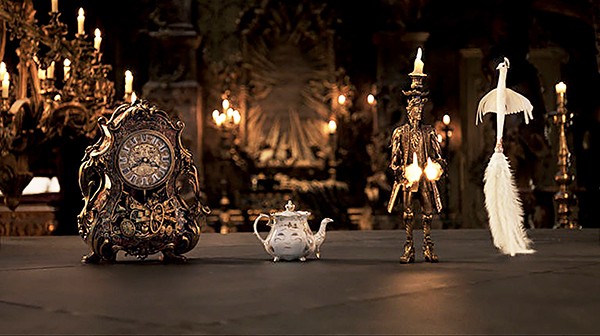Disney’s 1991 production of Beauty and the Beast was a success by any measure. It was a huge box-office hit, earning 16 times its budget, a fact made even more remarkable because it was an animated musical with an original score. Those songs, including classics “Be Our Guest” and “Beauty and the Beast,” swept the musical categories at the Academy Awards. But one scene in particular stands out as historic. When Belle and the Beast waltz together for the first time, the camera swooped and soared through the beautiful, cavernous ballroom with a freedom never before seen in animation. The ballroom was modeled by a computer in 3D, using techniques and technology developed by Pixar, which at that time was a technology company started by Steve Jobs. The scene signaled a seismic shift in animation away from hand-drawn images to increasingly sophisticated computer renderings. Four years later, Pixar’s first feature, Toy Story, which was entirely 3D-rendered, closed the door on the classical era of animation.

In a way, Disney has come full circle with its “live-action” remake of Beauty and the Beast. I used the quotes because there is very little in this beast that hasn’t felt the touch of the cursor on a monitor in California. The CGI modeling techniques introduced in 1991 have become so sophisticated that they are virtually indistinguishable from “live-action” images. The production’s most astonishing accomplishment is Cogsworth, the fussy old head of the Beast’s household who has been transformed by the Enchantress into an ornate clock. Voiced by Ian McKellen, the incredibly detailed creation features layers upon layers of moving clockwork, and yet has enough expression and movement to do physical comedy with Lumière, the enchanted candelabrum voiced by Ewan McGregor.
Cogsworth is just one element in a rush of onscreen visual wonders, and it would be easy to miss his awesomeness. And that’s the biggest problem with this Beauty and the Beast — if I had to choose one word to describe the movie, it would be “cluttered.” The 1991 version often exploded into a riot of movement, especially in the centerpiece “Be Our Guest” dinner party sequence, but the minor abstractions introduced by traditional animation tempered the visual impact of those sequences. This time around, when the army of china comes whizzing at you, they’re fully rendered plates glinting in meticulously modeled candlelight. Beauty and the Beast is a frequently beautiful film, but it’s also sometimes hard to watch.
Fortunately, Emma Watson’s Belle is never hard to watch. Of the group of exceptional actors who came out of the Harry Potter franchise, Watson is the most talented. For the generation who grew up with her as “The Brightest Witch of Her Age,” she has come to represent millennial feminism. She’s the perfect choice for the live-action adaptation of the heroine who inspires the simple townspeople of her not-very-French village to sing “what a puzzle to us is Belle.” Seeing as she was about 18 months old when the original movie came out, she likely grew up watching the cartoon version of the bookish commoner who is ultimately wooed by the size of the Beast’s library. Her singing voice, while not the equal of Paige O’Hara’s work in the original, is more than adequate to the task. She commands the screen without ever really seeming to break a sweat.
Watson’s Beast is Dan Stevens, who gets considerably more screen time in this version of the story, which leans heavily on the Broadway adaptation. His shutter-rattling, no doubt enhanced baritone serves to flesh out the motion-captured character. Even better is Luke Evans as the anitheroically square-jawed Gaston. He is the very picture of toxic masculinity, ready to go full demagogue at the drop of a hat and lead the torch-waving visitors to go all Frankenstein on the Beast.
Much better than last year’s Jungle Book remake, Beauty and the Beast almost justifies the enormous expense poured into it. It reinforces the contention that Disney is the only contemporary studio that knows how to make a good movie. With her effortless brush-off of Gaston’s boorish advances, Watson’s Belle is coded as appropriately woke. But one wonders at the feminist subtext of a kidnapped woman who falls in love with her captor and changes the brute into a handsome prince by sheer force of her womanly charms. Amid all the ballyhoo and singing, its corporate perfection often feels flat. With all rough edges rounded off, this version of Beauty and the Beast is just another girl meets anthropomorphic water buffalo, girl loses man-buffalo, deus ex machina makes everything OK story.
Beauty and the Beast
Now playing
Multiple locations